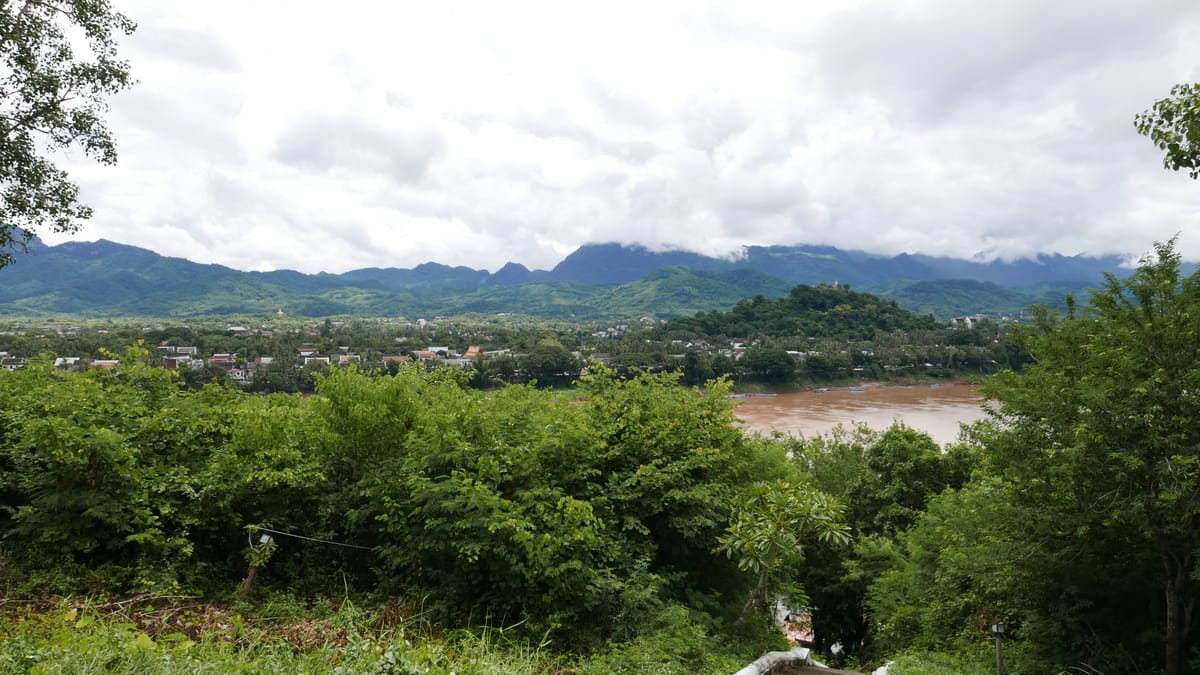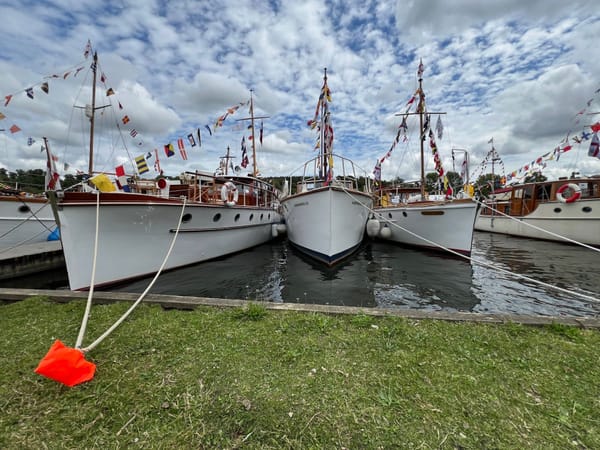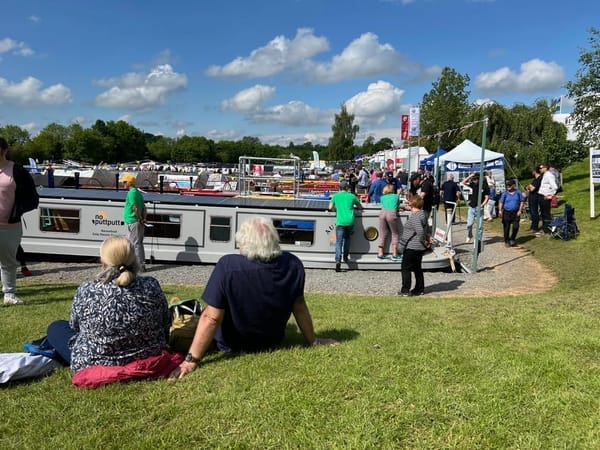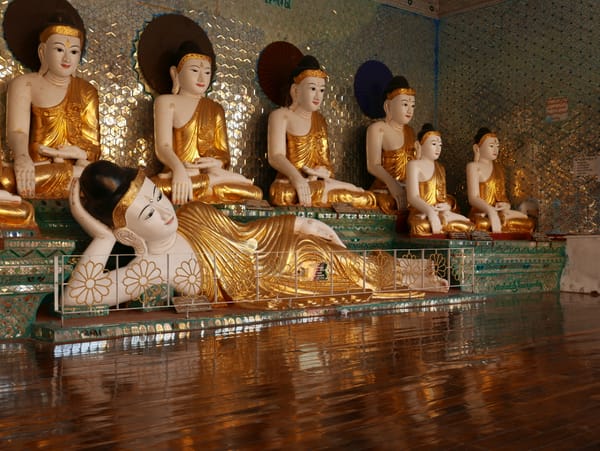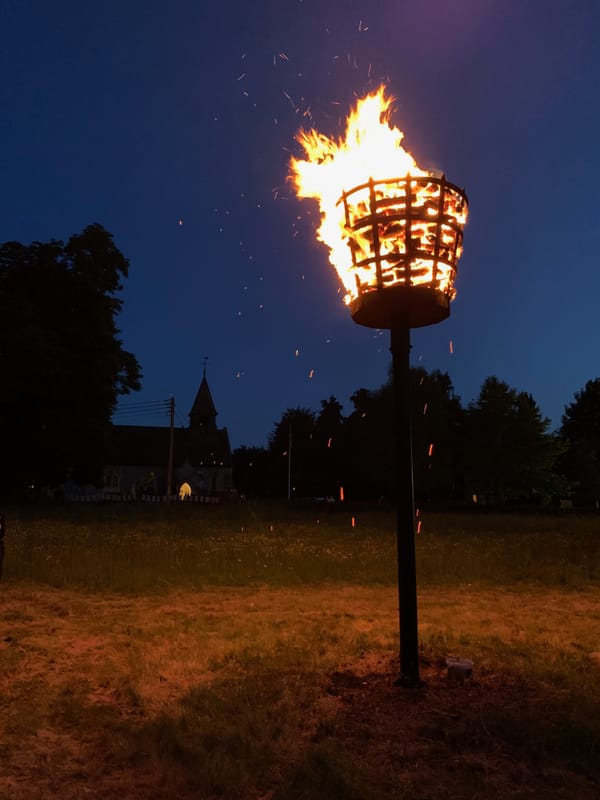Laos — Ban Xieng Man, Luang Prabang (ຫລວງພະບາງ/ຫຼວງພະບາງ), Laos
Exploring the village
September 2015
A short 10-minute ferry ride from Luang Prabang (ຫລວງພະບາງ/ຫຼວງພະບາງ) across the Mekong River, is a village called Ban Xieng Man.
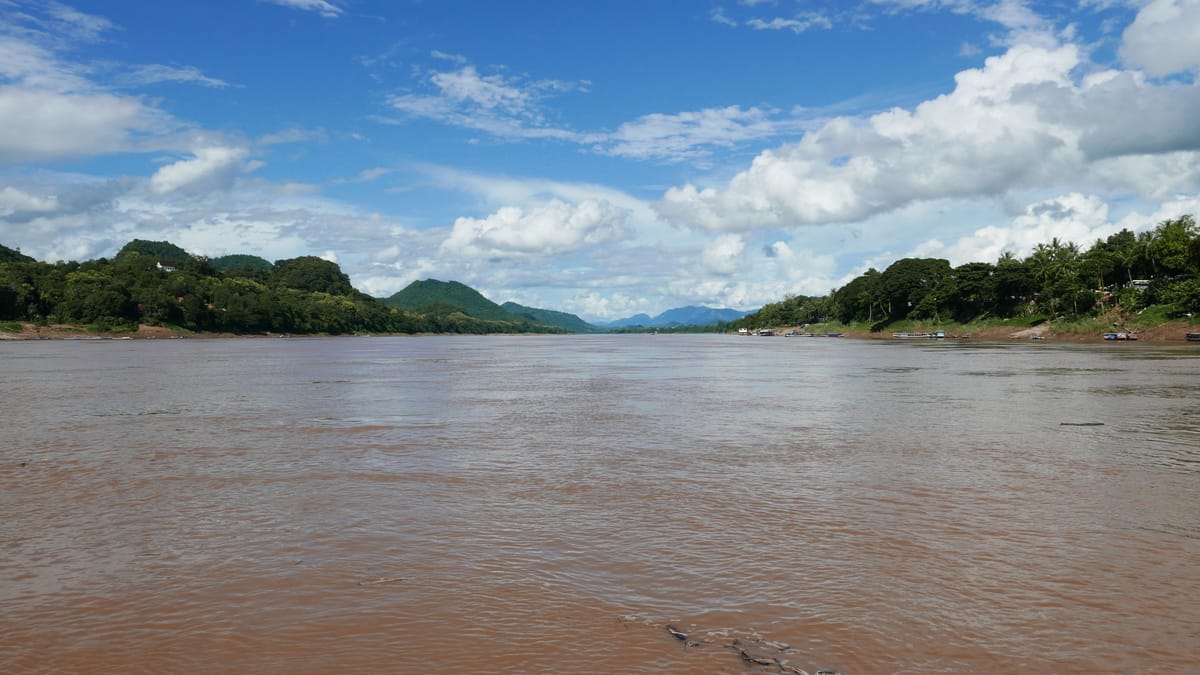
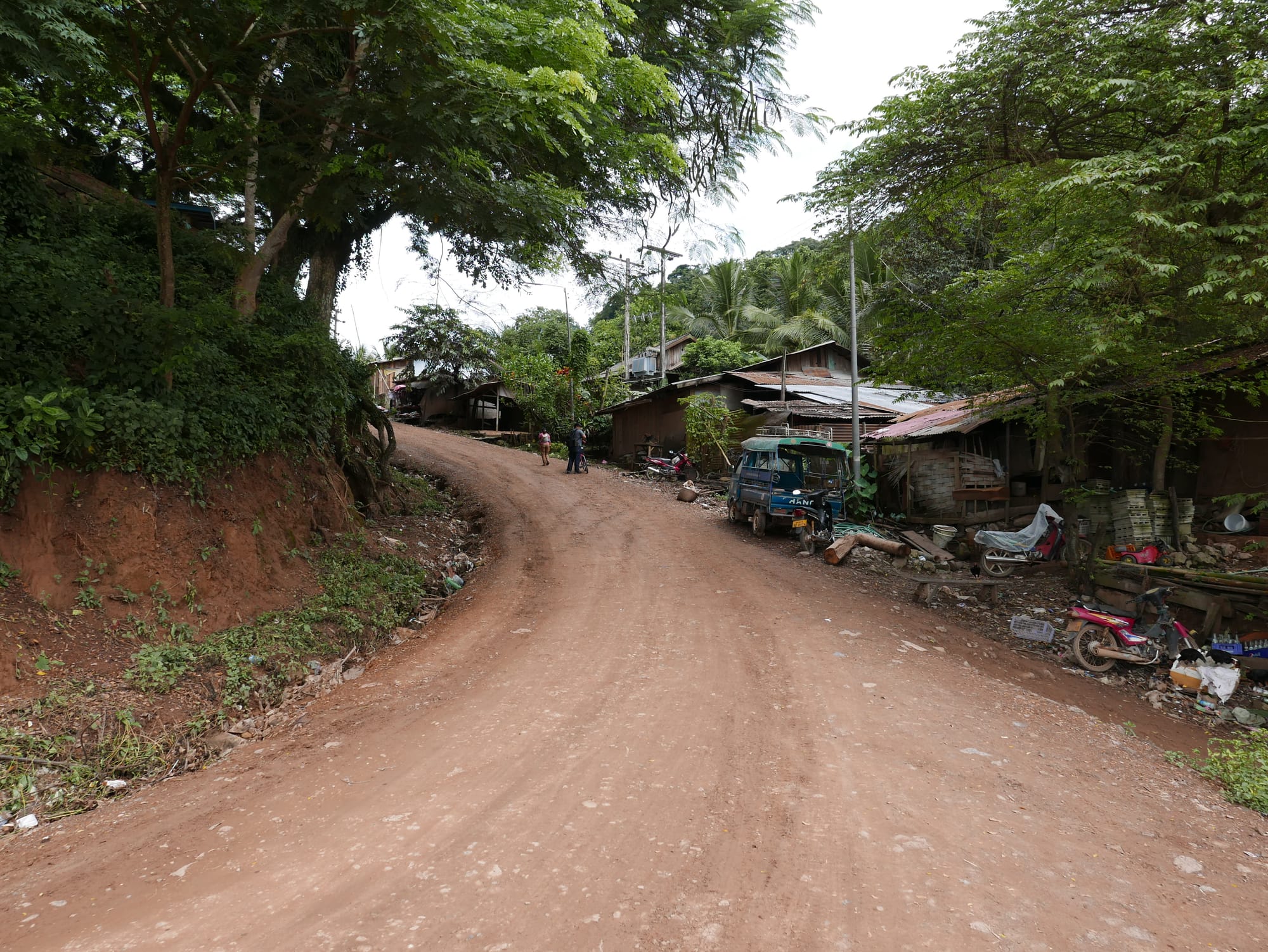
In the village, a handy map showed locations, with distances, of local villages, temples, caves, and waterfalls.
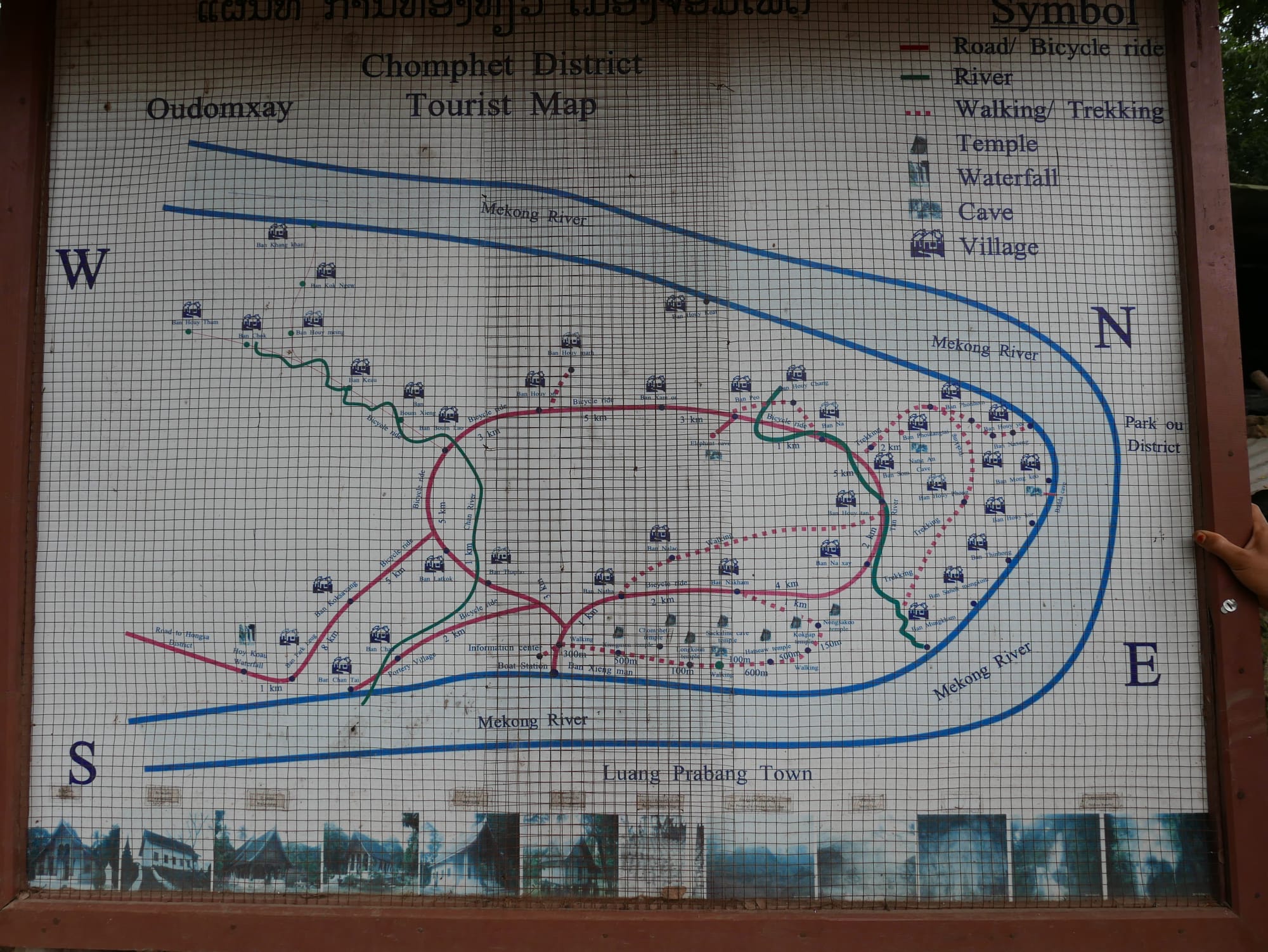
And in a tourist information centre, I got a local leaflet and map.
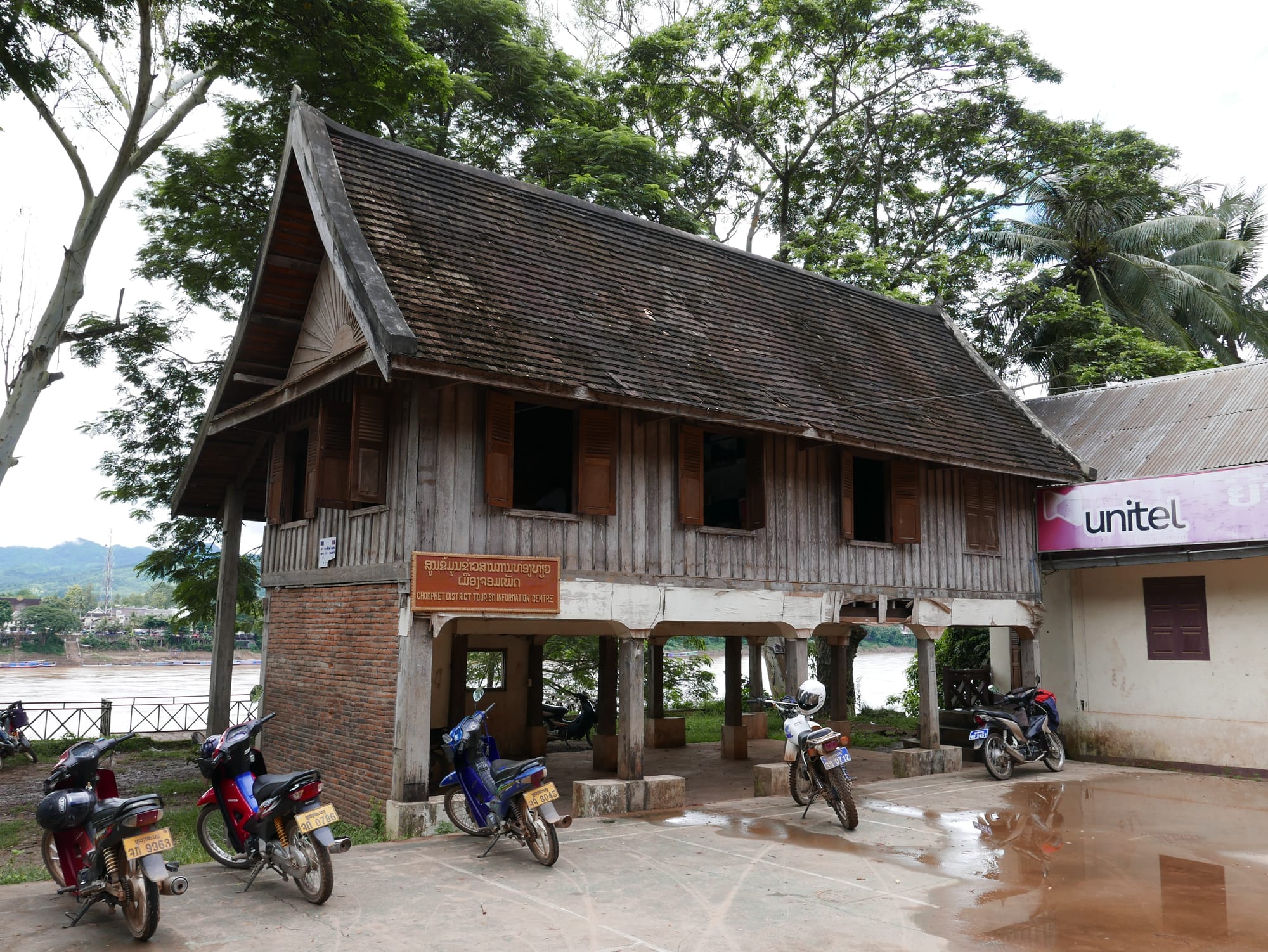
At the local tourist office, I learnt about several local places to visit:
- Wat Xiengman — the oldest temple in the district, dating to the 16th century, with a temple door decorated by Luang Prabang and Myanmar artisans.
- Wat Chomphet — dates from 1888 and is an abandoned temple on top of Phouphet Hill, offering views of Luang Prabang and the Mekong River. The walls are covered with a mixture of Thai and Chinese style patterns, and there is a picture of a swan and dragon on the ceiling, representing the servants of God Kuam Im.
- Wat Longkoun — 18th century. This temple is a place for meditation rather than worship. The Laos Kings became monks in the temple before their coronations.
- Nang Eanh Cave — the cave is exceptionally beautiful (well, that is what the leaflet said). And this cave has a tragic love story. As it said in the leaflet from the local tourist office — “Nang Eanh has become the daughter of the cave. She was beautiful and in love with a young man called Tho Kiew. Although they were planning to get married, Nang Eanh's father didn't approve of it because he had someone else in mind for his son-in-law. Her father liked a man called Thou Khod because of his wealth. He advised Thou Kvhod to make preparations for the marriage ceremony to Nang Eanh against her will. On the day of the wedding. Nang Eanh locked herself in the cave, refused to come out and eventually died in the cave.” — it all sounded a bit grim to me.
- Xang Cave — this cave supposedly looks like an elephant from the outside, with the interior rock formation resembling an elephant's internal organs. The cave also has a pond of clear water for swimming. The cave is located near Phell Village.
- Hovkhua Waterfall (100 Families Waterfall) — the 30 m high waterfall is located near the village of Paklueng. There were around 100 families in Paklueng, hence why it is called the "100 Families Waterfall”. There is a swimming area at the cave.
- Ban Chan — is famous in northern Laos for making pottery. The village was asked, according to local folklore, to make all the pottery for the coronation of King Chao Fa Gum, who united Laos. The village is located near the Mekong River, about 15 minutes from Luang Prabang town by boat and a 25-minute walk from the boat landing at Xiengman village.
However, my time was short, so I decided to do the ‘full-day’ trek as shown on the hand-drawn map.
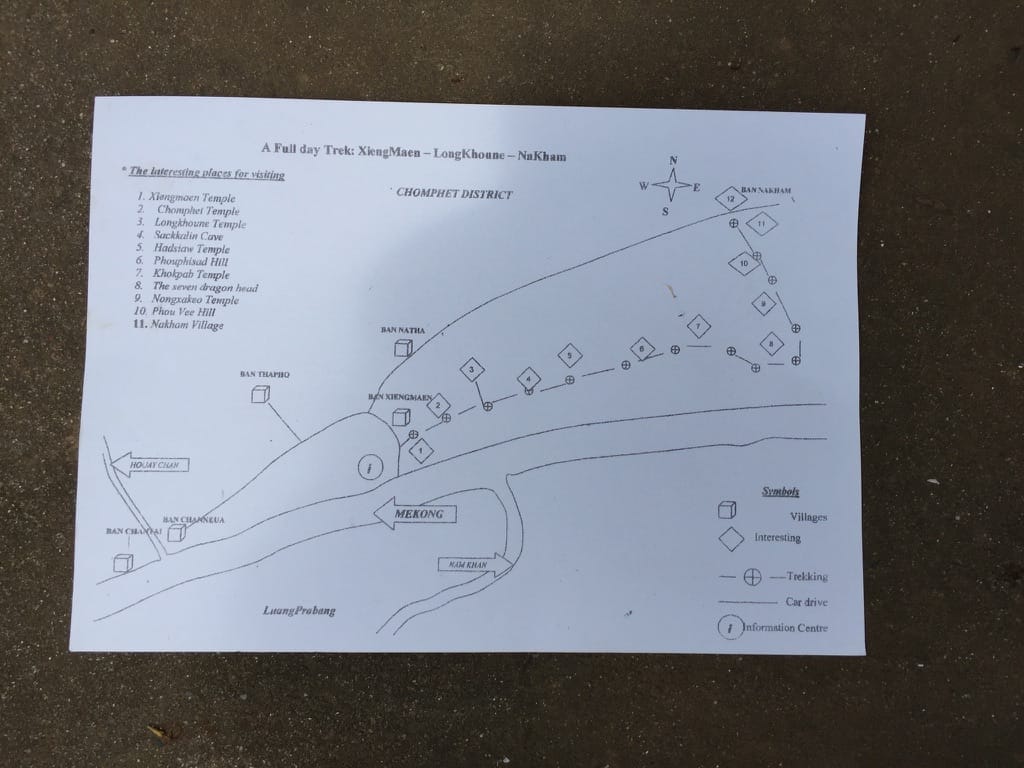
But as the larger map suggested it was around 7 km (about 4 miles), I was confident I could walk in a little over an hour.
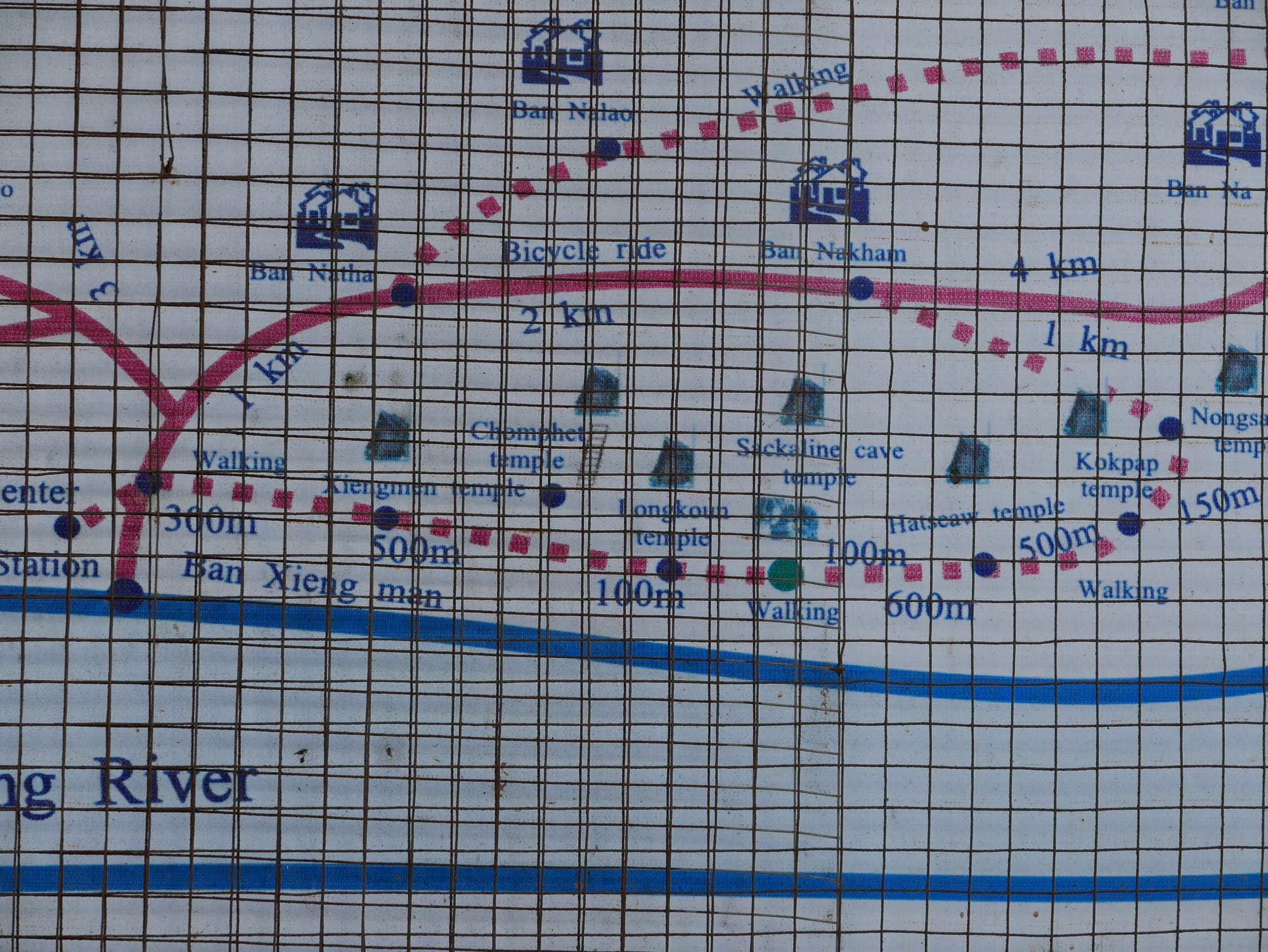
But, before my hike, I decided to look around the village.
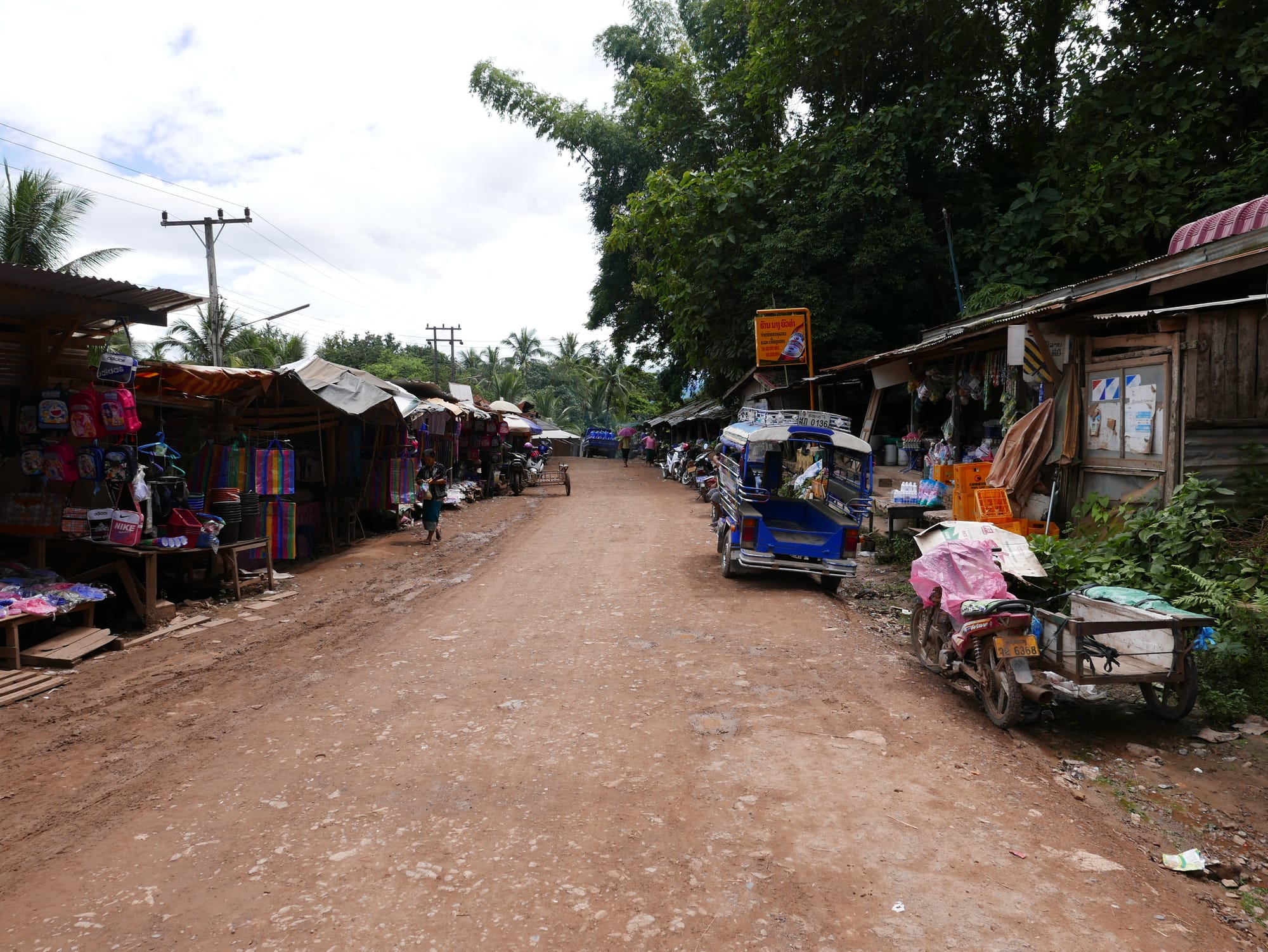
I must admit that what was on offer at the local butcher didn’t look that appetising.
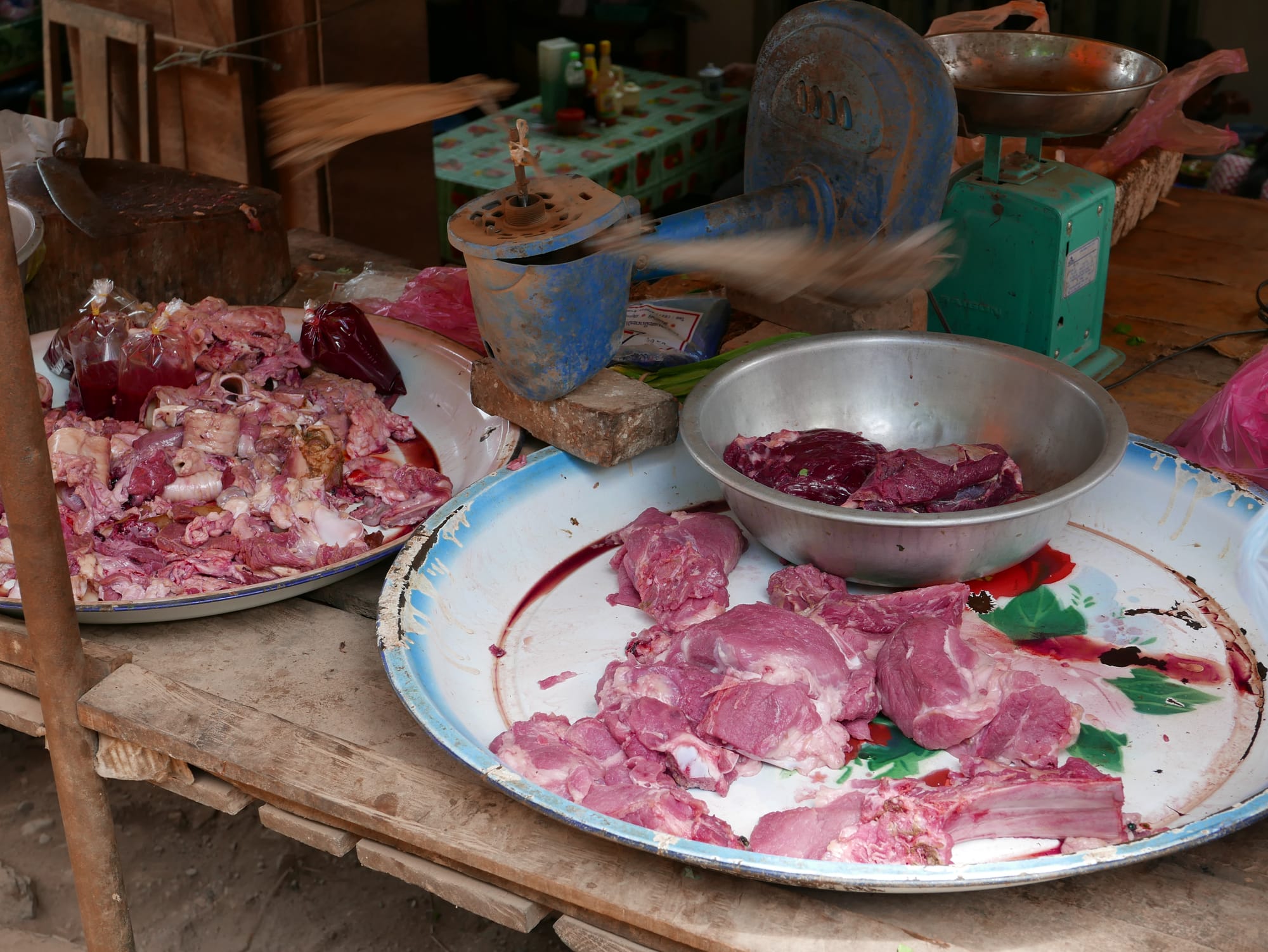
And the locals seemed rather laid back.
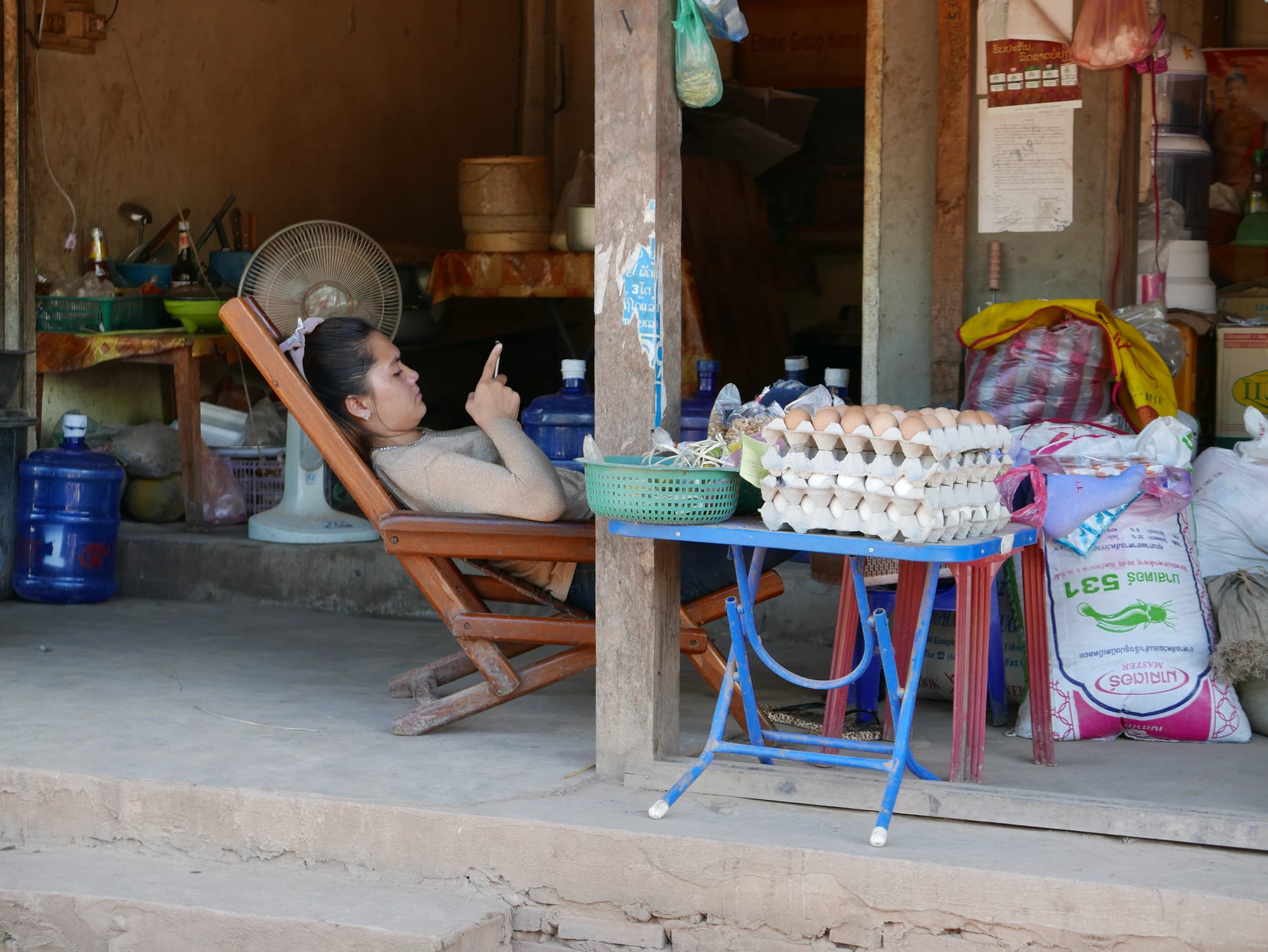
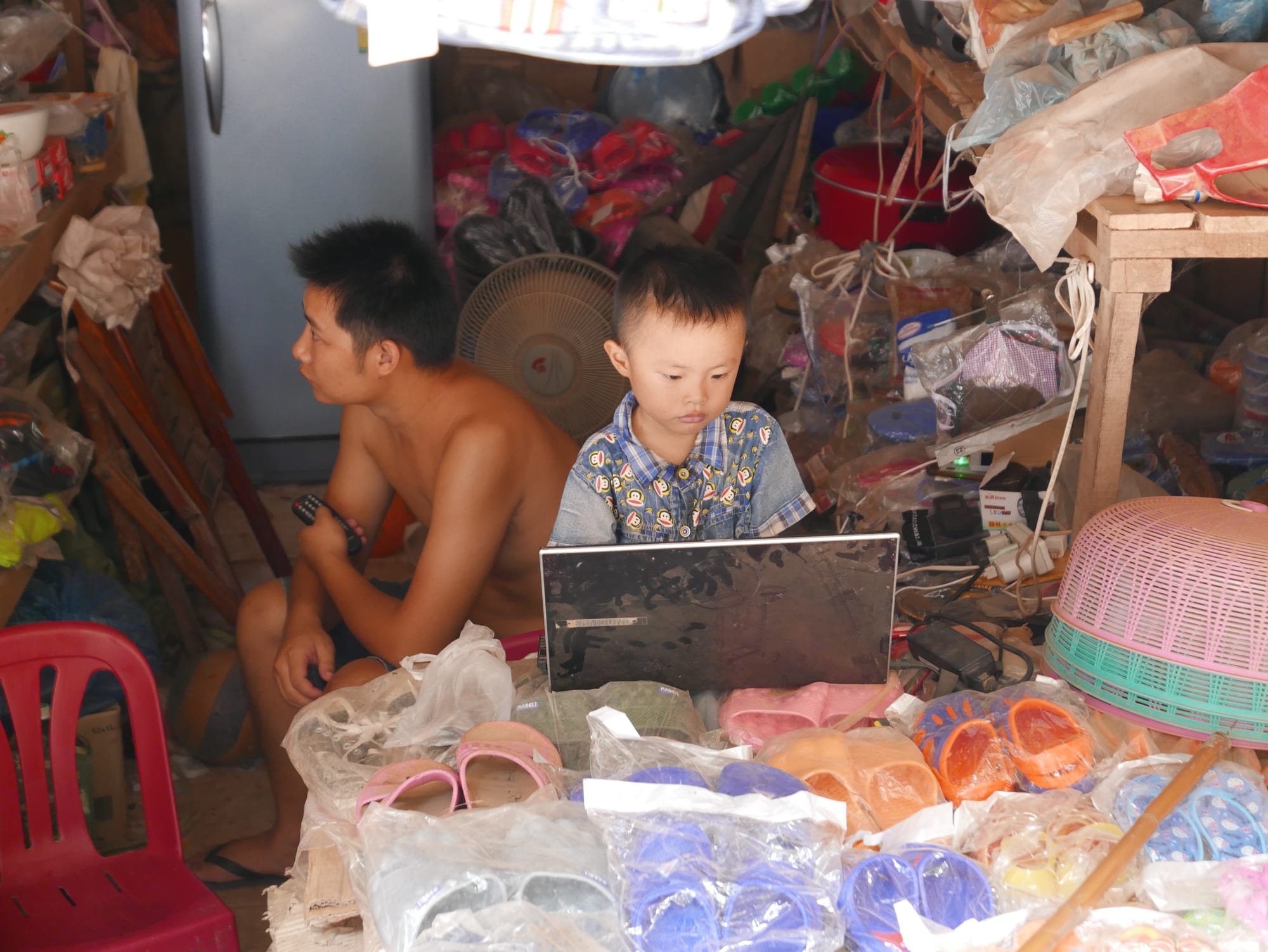
I found some of my favourite fruits on sale — Rambutan.
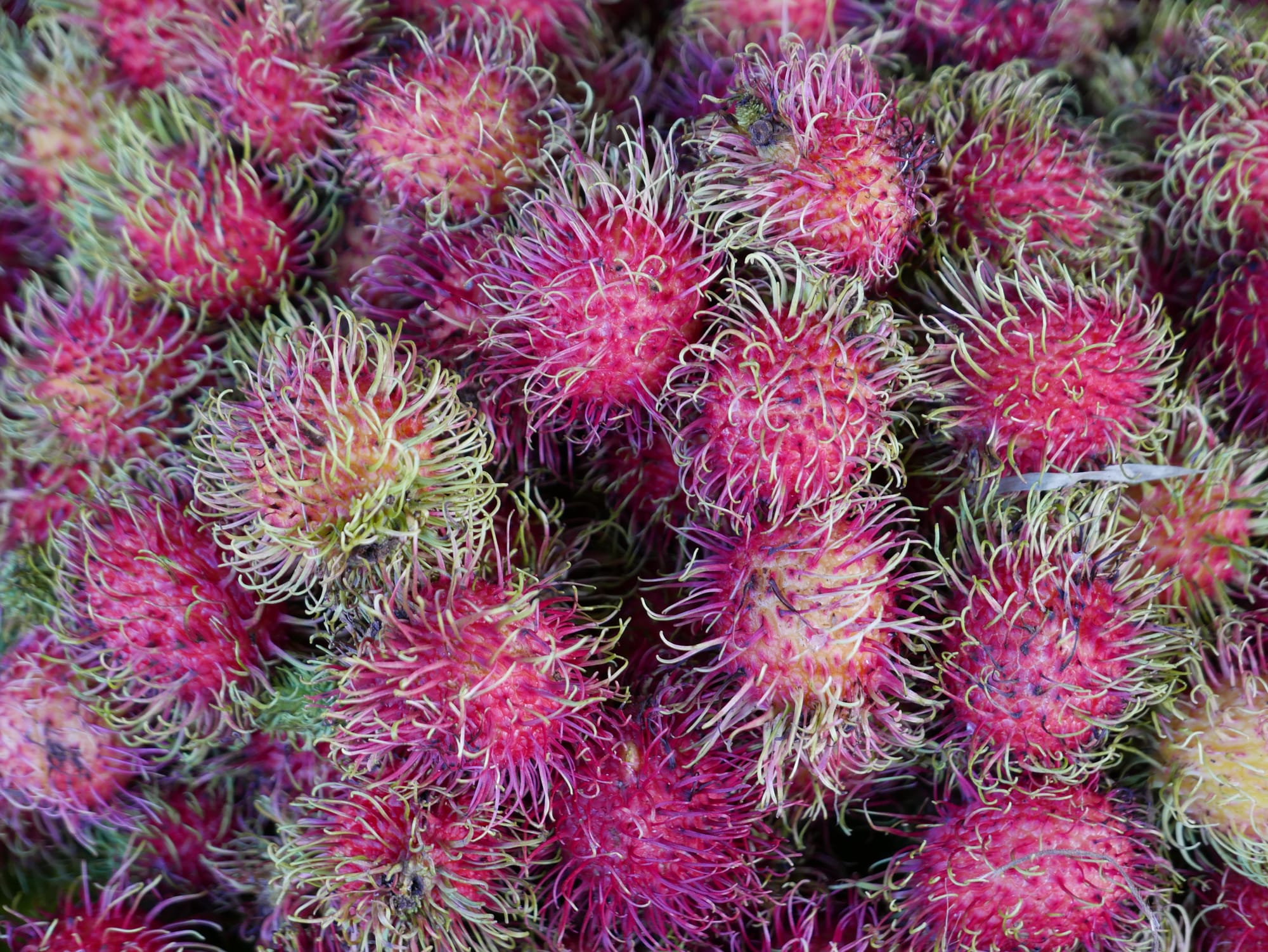
And I loved the look of a local burner/stove.
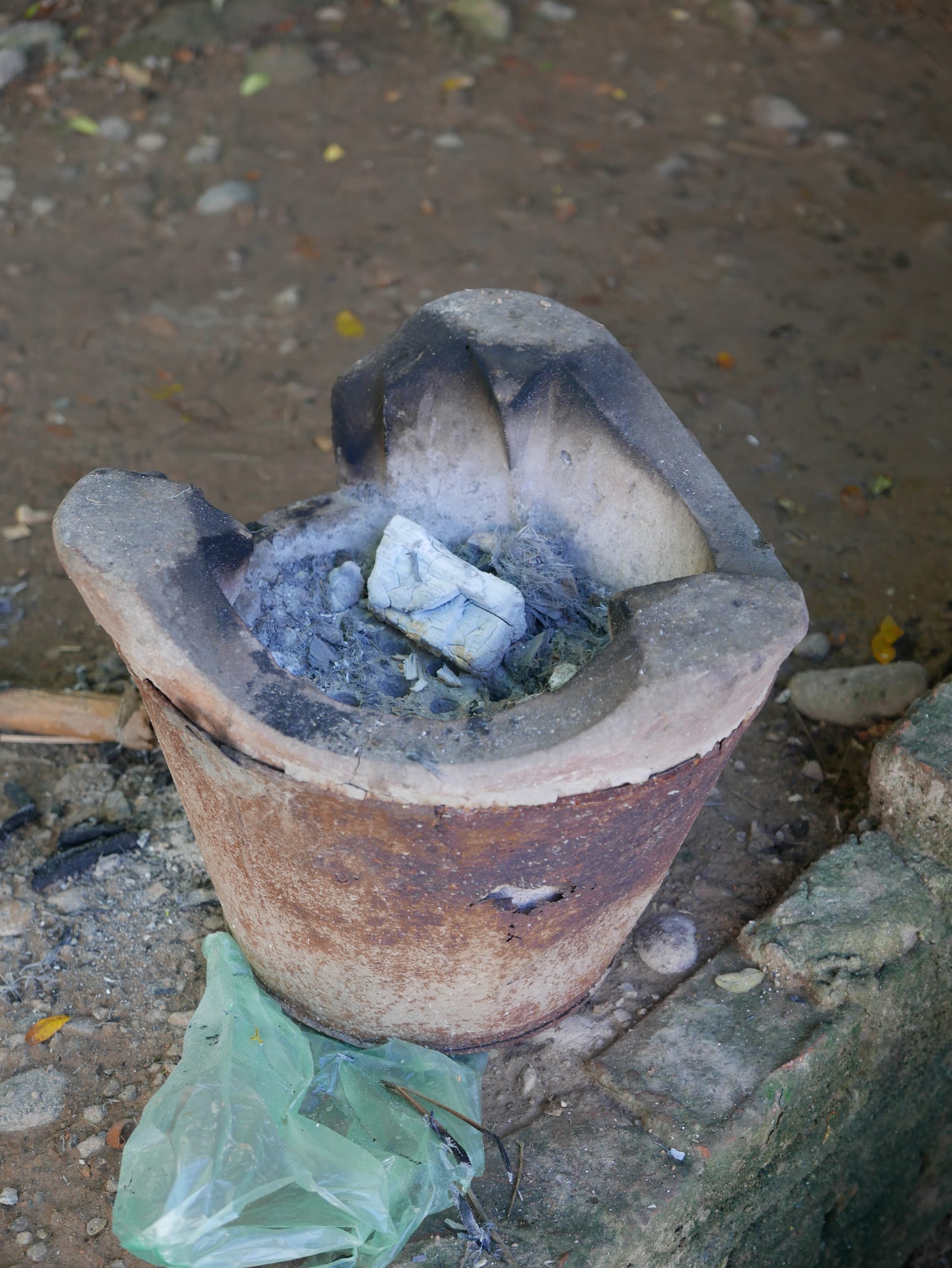
I then headed out of the village on my circular hike.
